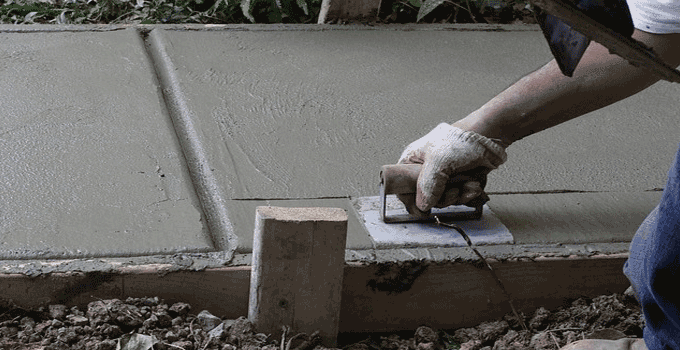How To Preserve Your Concrete Projects?
Completing a new project, no matter what it is, comes with a sense of pride and satisfaction. It can be easy to call the project done and let it be, but sometimes there are extra steps we need to take to make sure our hard work is preserved. One type of project that needs post-completion care is concrete projects. It can be redoing your driveway, patio space, backyard. etc.
How to Preserve your Concrete Projects?

There are steps you can take to make sure the new addition stays new.
#1 Watering your Concrete
At first thought, the idea of watering your concrete can seem a bit odd. Watering your concrete after the project completion aids in the curing process. The curing process is what gives concrete the durability, stability, and strength that it is known for. The popularity of concrete comes from its durability and longevity, if it is not cured correctly those qualities can be lost.
The time for curing is dependent on how thick that slab is. It can range from 72 hours to two weeks.
When should you start watering your concrete after it is poured? Well, it is recommended you start watering your concrete two to four hours after it has been poured. After that initial setting process, you should begin the curing cycle.
There are a few different methods for watering concrete that will aid in the curing process. The first method is spraying down the concrete. Professionals recommend spraying down the concrete five to ten times a day for the first seven days. This will greatly increase the strength of the concrete compared to dry-cured concrete.
Another popular method is referred to as a pond-cure. This involves setting up a barrier around the concrete slab and covering it with water. The concrete will slowly absorb the water, you may need to refill to ensure the water level is above the slab. Three days of the pond-curing method can be just as effective as a full week of spraying it down.
#2 Apply Sealant
Concrete sealant is applied after the concrete has had time to cure. This sealant is another added layer of protection that you can use to extend the lifespan of your project. Waiting until the concrete is fully cured gives you the freedom to choose what sealant you want to use.
Sealing your concrete adds another layer of defense against deterioration and surface damage. After applying your sealant you will have to worry less about staining, cracking, mold, and damage from winter conditions.
There are many different types of concrete sealant. Which one to choose is dependent on a few different factors. What climate you live in, what your main damage concerns are, and what you want your concrete to look like after the sealant is applied. Two of the most common sealants are silicates and acrylics. While they will both protect the concrete, they usually serve different purposes.
#3 Keep it Clean
Keeping your concrete clean is important to its lifespan. Stains on your concrete do not just ruin the look, those stains can lead to concrete deterioration. If you notice stains it would be best to clean them quickly. Concrete is a porous material and cleaning these stains before they can seep into the concrete can help prevent the oils and other chemicals from seeping through the concrete.
On top of the damage it can cause, soil stains can discolor your concrete. If you just put time and money into a new driveway, the last thing you would want is to have oil stains to ruin the clean look.
It is also important to keep it clean from natural buildup. Minerals, mold, and mildew can build up and cause staining of your slab. There are cleaning products out there targeted to help with these natural buildups. That being said, another effective way of dealing with this is a power washer. Power Washing your concrete slabs is an effective way to remove buildup and give it a fresh clean.
#4 Avoid Damaging Chemicals
When cleaning your concrete it is important to use concrete specific products. Certain household products can cause more damage than expected. The concrete-specific cleaners will give you the best results, with the least amount of hassle and damage.
If you live in an area with harsh winters, one item of note is that deicing chemicals can damage your concrete. It is strongly recommended that you do not use deicing chemicals before it is a year old at all. The problem with these is not the chemical itself, but the inflated number of freezing and thawing cycles that occur. The natural freezing and thawing cycles on their own can do enough damage on their own. With the addition of the deicing agents, it can exaggerate the damage.
Final Thoughts
It is important to keep your concrete protected and clean. You put time and money into your project, whatever it may be. Taking the time to preserve and clean it will only help your investment last as long as possible.


